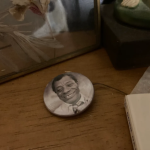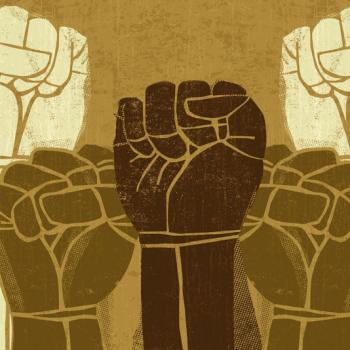on ‘You People’ and the banality of assimilated whites

The most divisive force in America today is, ironically, precisely the “new class” of liberal and radical academics, media personnel, and social service professionals that thinks itself so moral. Perhaps out of guilt feelings—or for whatever reason—they have projected all guilt for “white racism” onto others. And, without undergoing any of the costs themselves, they take sides or plainly appear to take sides in the very sharp competition between lower-class people, white and black, for scarce jobs, scarce housing, scarce openings in colleges, scarce scholarship funds…For almost a decade they have made “white racism” the central motif of social analysis, and have clearly given the impression that vast resources were going for blacks, nothing for others. -Michael Novak, The Rise of the Unmeltable Ethnics, 1972
While in the throes of yielding to the temptation of watching You People, the #1 most popular film on Netflix last weekend, I already knew what I was signing myself up for. As with most Netflix originals, one must prepare oneself for, as Anna Khachiyan once called it, “the woke truck coming to run you over until your skull is splattered on the pavement.”
Glenn Greenwald, in an interview on the Red Scare podcast with Khachiyan and co-host Dasha Nekrasova, bemoaned the ubiquity of series and films that “preach” and “moralize in a crude way.” Content produced by major streaming platforms like Netflix and Hulu, responded Khachiyan, “may as well include a voice over spelling out for viewers who the heroic, virtuous characters are,” who are more often than not the “oppressed minorities.”
Nekrasova distinguished between propagandistic art, which prepackages the “correct” interpretation of a program for viewers (thus implying the assumption that viewers are too morally inept to draw reasonable conclusions for themselves) for genuine works of art, which generate “interesting debates” and questions “without paralyzing” open discussion. “That’s when art is most interesting,” replied Greenwald, “when it can take actual parts of life and make you think and make you have doubts about your own initial impressions and reactions and judgments instead of just having to digest messaging.”
What is at the origin of productions like You People, whose script seems to have been written by an algorithm relying on a database of Twitter posts and TikTok jargon? More importantly, what is it that drew viewers to spend part of their weekend watching a piece of simplistic, moralizing propaganda posing as art?
In his 1972 masterpiece The Rise of the Unmeltable Ethnics, Michael Novak points to key factors that propel assimilated whites (like the bourgeois, upper-middle class Californian Reformed Jewish family featured in the film) to neurotic moralizing and cloying sycophantism.
First, he highlights the detached, atomized, and rationalistic sense of selfhood and morality spawned by Anglo cultures. The secularized rendering of puritanical Protestantism (and a distant offshoot of a Manichean understanding of good vs. evil), the moral consciousness of WASPs and ethnic whites who have assimilated has a hard time embracing the gray areas that constitute human nature, and asserts that resolving moral issues (like racism) solely requires an individual’s voluntaristic rational choice.
Once having chosen the right side of history, the individual can now count themselves among the “saved,” wearing their moral virtue like a badge of honor. This parading of one’s having learned and internalized the approved moral script serves to fill the void left behind by the uprooting of their ethnic heritage.
The richly layered Jewish cultural consciousness (which Novak spends several pages exploring with deep esteem) has been largely abandoned by Ezra’s (Jonah Hill) family. Aside from synagogue attendance on holidays and occasional observance of Mosaic laws, the family has traded in their Jewish roots to become the equivalent of bourgeois suburban Anglos. Their moral anxiety and neurotic desperation to prove that they are not racists (despite their racial faux pas like microaggressions and cultural appropriation) is a projection of their subconscious awareness of being atomized, rootless automatons.
“Our nation suffers,” says Novak, “from enormous emotional repression. Our failure to legitimate a genuine cultural pluralism is one of the roots of this repression. Our rationalization is fear of disunity; and in the name of unity, uniformity is benignly enforced. (The weapon of enforcement is ordinarily shame and contempt.)”
The proliferation of assimilated white elites who harp endlessly about social justice issues du jour, reading verbatim from the cultural script prepared for the “Enlightened” elect class, are a case in the Freudian projection and transference of unresolved psychic and existential complexes brought on by assimilation. It’s a shame that the cultural hegemony has traded in Freud—who could have provided them the tools to diagnose their malaise—for CBT…yet another case of the Jewish cultural consciousness being flouted in favor of a mechanistic Anglo one.
Our globalist technocratic monoculture churns out cloying white people like Ezra’s parents, who parade their grating need for attention, approval, and existential validation as moral virtue. “What is illiberal,” continues Novak, “is homogenization enforced in the name of liberalism. What is divisive is an enforced and premature unity, especially a unity in which some groups are granted cultural superiority as models for the others. What breeds hostility is the quiet repression of diversity, the refusal to allow others to be culturally different, the enforcement of a single style of Americanism.”
What exactly, then, can one do with assimilated white people? What function can they serve, other than—like small, infantile children—to search desperately for people onto whom they can project their unresolved complexes? It’s those bland, vanilla white people who lack any sense of flavor (and more likely than not haven’t the slightest idea as to how to season their food)…who rely on virtue signaling as a form of Mrs. Dash, if you will—a substitute for real seasoning, to hide the fact that they suffer from a deep existential despair and identity crisis…that they have lost any vestiges of the cultural sensibility of their ancestors.
“White tears don’t move me,” so the saying goes. Just as Ezra’s mother’s tears did not move his black American fiancée, they shouldn’t move us…but instead should provoke laughter and ridicule. The solution to her white fragility is not necessarily to “do better” and—driven by moralistic fear—educate herself on avoiding microaggressions (while perhaps not being a life or death matter, would surely be something worth her time).
Rather, the solution to white fragility is for assimilated whites to recover their roots, to reestablish a foundation for themselves in their ethnic heritage. Such a foundation, which will surely provide them a more nuanced and complex sense of culture, relationships, morality, psychology, and reality in general, will enable them to enter into more meaningful and substantial relationships with people of other backgrounds.
The goal, then, ought not be to publicly flaunt one’s ally badge. Rather, it’s to stand in solidarity and collaborate with others. “One can still give blacks highest priority, but in an inclusionary way that aims at coalitions of whites and blacks on the grievances they have in common,” says Novak. “Newark is divided almost wholly between blacks and Italians; Detroit between Poles and blacks. Inadequate schools, the dangers of drugs, insufficient housing, the lack of support for families and neighborhoods–these grievances afflict white ethnics and blacks alike. If these problems are, by definition, problems of race, what sort of practical coalition can possibly grow? If they are perceived as problems of class (with ethnic variables) there is at least a practical ground for effective coalition.”
Such a solution would require whites not to “fly off” to the suburbs–if not literally and then at least existentially. Novak cites people like Fr. Geno Baroni and Steve Adubato Sr. (my grandfather) who made it their mission to maintain ethnic enclaves. Whites ought to be cautious not to trade in their roots and a more “grounded” social imaginary for a detached, bourgeois “Enlightened” one that categorically renders them elitists and cuts off any chance of genuine solidarity with others in cities and to work together with people of other races and ethnic groups.
Rather than watching You People to understand the complex relationship between black Americans and ethnic whites, one might want to revisit Spike Lee’s magnum opus Do The Right Thing.
And or further reading/listening, check out my articles on Rosalia’s cultural appropriation, on Novak and Columbus Day, on ethnic whites and identity, my interview with Albert Thompson, whose understanding of racial justice holds a space for ethnic identity rather than collapsing it into abstract categories based on power dynamics, my articles on Obianuju Ekeocha and Chris Arnade, which explore how poststructuralist critical theory can at times be used as a tool for ideological colonization of oppressed minority groups, precisely because of its rejection of their aesthetic and metaphysical convictions, my interviews with Katherine Dee (defaultfriend) and Bill Melone on ethnic erasure and transracialism, and Bill’s article on Rachel Dolezal in Mere Orthodoxy, and my article on my grandfather’s work with Fr. Geno Baroni to unite ethnic whites and POCs in Newark.
$upport CracksInPomo by choosing a paid subscription of this page, or by offering a donation through Anchor. Check out my podcast on Anchor and YouTube and follow me on Instagram and Twitter.












